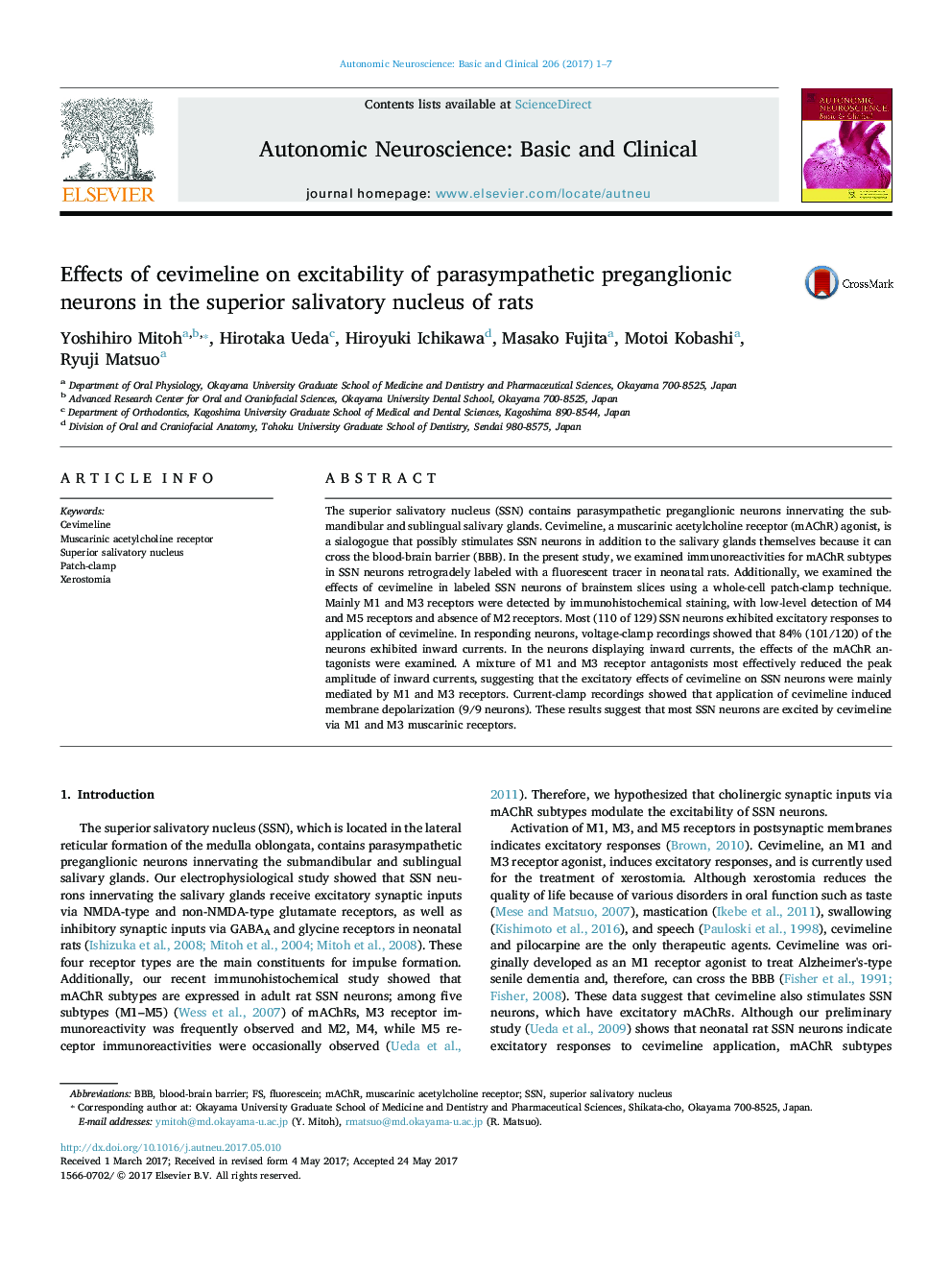| کد مقاله | کد نشریه | سال انتشار | مقاله انگلیسی | نسخه تمام متن |
|---|---|---|---|---|
| 5625930 | 1579509 | 2017 | 7 صفحه PDF | دانلود رایگان |

- We investigated muscarinic receptor expression in the neonatal rat.
- Superior salivatory nucleus (SSN) neurons primarily express M1 and M3 receptors.
- Cevimeline produces inward current and depolarization in most SSN neurons.
- Cevimeline-induced inward current is mediated by M1 and M3 receptors.
- Cevimeline may indirectly induce salivary secretion by stimulating SSN neurons.
The superior salivatory nucleus (SSN) contains parasympathetic preganglionic neurons innervating the submandibular and sublingual salivary glands. Cevimeline, a muscarinic acetylcholine receptor (mAChR) agonist, is a sialogogue that possibly stimulates SSN neurons in addition to the salivary glands themselves because it can cross the blood-brain barrier (BBB). In the present study, we examined immunoreactivities for mAChR subtypes in SSN neurons retrogradely labeled with a fluorescent tracer in neonatal rats. Additionally, we examined the effects of cevimeline in labeled SSN neurons of brainstem slices using a whole-cell patch-clamp technique. Mainly M1 and M3 receptors were detected by immunohistochemical staining, with low-level detection of M4 and M5 receptors and absence of M2 receptors. Most (110 of 129) SSN neurons exhibited excitatory responses to application of cevimeline. In responding neurons, voltage-clamp recordings showed that 84% (101/120) of the neurons exhibited inward currents. In the neurons displaying inward currents, the effects of the mAChR antagonists were examined. A mixture of M1 and M3 receptor antagonists most effectively reduced the peak amplitude of inward currents, suggesting that the excitatory effects of cevimeline on SSN neurons were mainly mediated by M1 and M3 receptors. Current-clamp recordings showed that application of cevimeline induced membrane depolarization (9/9 neurons). These results suggest that most SSN neurons are excited by cevimeline via M1 and M3 muscarinic receptors.
Journal: Autonomic Neuroscience - Volume 206, September 2017, Pages 1-7